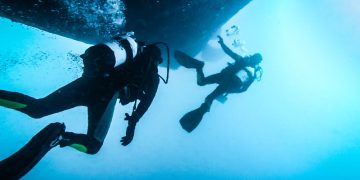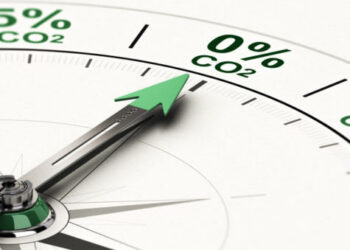In an exclusive interview with Jens Meier, CEO of the Hamburg Port Authority (HPA), we explore emerging sustainability trends affecting ports worldwide. As President of the International Association of Ports and Harbors (IAPH), Meier emphasizes the critical role major ports—such as Hamburg—must play in becoming sustainable energy supply hubs. This involves developing the infrastructure necessary to handle future energy sources like hydrogen and ammonia.
According to Meier, sustainability efforts over the past decade have centered around three key goals: decarbonization, affordability, and energy security. “Now, it’s time to strike the right balance among these priorities,” he explains. “The energy transition requires a massive amount of cross-sectoral cooperation and supportive regulation.” To that end, Meier calls on all stakeholders to remain open to dialogue and to embrace change and innovation.
SAFETY4SEA: What are the biggest challenges in the energy transition for the port sector? What are your key concerns at the top of your list, for the time being?
Jens Meier: When considering the framework of the energy transition in the port sector, three main aspects stand out. Firstly, sustainable green technologies require sound financial business cases, as high investments in novel technologies are costly and often lack secure business cases. For example, Hamburg has invested over €100 million in onshore power supply systems ahead of the EU obligation that won’t be introduced until 2030. To be a frontrunner, we must advocate for our investment without a secure business case and heavily rely on public assurances and financial support. Secondly, a pragmatic legal framework is essential for expanding clean energy sources in ports. And lastly, each of us in the port sector needs the courage to break the mould. In the Port of Hamburg, we have been pioneers in many areas and have often faced initial scepticism. Nevertheless, we have paved the way for today’s accepted practices. We also did this by not only presenting visions, but also by convincing with concrete examples. It is important not to be discouraged in such phases. Someone must take the first step for things to change.
S4S: Do you believe the maritime industry is on the right path? What key ESG and sustainability trends do you see shaping its future?
J.M.: Looking around the maritime industry, the signs point to a paradigm shift. Important bodies that set the tone for shipping, such as the IMO, have paved the way with the IMO Strategic Plan for 2024 – 2029, adopted in December 2023. Eight strategic directions, such as tackling climate change, strengthening the resilience of maritime trade, protecting the marine environment, etc., have been placed on the agenda of all IMO Member States. This fits in well with major ports like Hamburg, where we are at the forefront of innovation in green technologies and sustainable port operations. A key issue for us is ensuring a sustainable energy supply, for which we have launched the Sustainable Energy Hub. These hubs play a crucial role in shaping the future of energy supply by developing port infrastructure capable of handling energy sources such as hydrogen and ammonia. In short: We are on the right path. Challenges remain, of course, but the direction is clear, and the momentum is building.
S4S: How do you see digitalization and advanced technologies—such as AI, big data, and blockchain—accelerating the green transition in shipping? Are there any specific innovations that particularly excite you?
J.M.: The application of advanced technologies in the port sector is definitely an accelerator for the energy transition. Ports are very complex energy consumers and offer us a real-world laboratory where we can combine innovation with established structures. The digitalization of traffic in port areas can also contribute to reducing emissions, for example by optimizing traffic flow through intelligent traffic light systems – which in turn minimizes CO2 emissions. After all, 12,000 to 14,000 trucks pass through this optimized area in the Port of Hamburg every day. Our MOZART (stands for Mobility Optimization and Analysis in Real Time) project, for example, aims to synchronise individual vehicle movements and traffic light phases in real time and prioritise truck impulses to avoid braking and acceleration. Intelligent traffic lights can increase traffic flow by 10 to 20 percent. Given what’s already possible, it’s more exciting to see what else will be possible with the help of AI in the coming years.
S4S: How can industry stakeholders collaborate more effectively to drive meaningful progress toward sustainable development?
J.M.: For me, a very important cornerstone is joint organised cooperation in a global ports alliance such as the IAPH, for which I have been appointed President in 2023. Such a complex challenge as decarbonization can only be mastered together. The IAPH currently represents some 190 ports in 89 countries. These member ports handle more than 60 percent of maritime traffic and more than 80 percent of container trade. Achieving sustainability on our own is a drop in the ocean, but together we can achieve real sustainable development. This requires close collaboration, sharing of knowledge and best practices. Also, the effective and secure exchange of data, which impacts both digitization and decarbonization, is indispensable.
S4S: What is your wish list for all the other stakeholders involved in a more sustainable future for the port sector, fostering Environmental Excellence?
J.M.: Over the past decade, the focus on sustainability has revolved around three objectives: decarbonisation; affordability, in particular ensuring that consumers pay a fair price for energy; and security, which means ensuring the reliability and resilience of energy supplies. We need to find the right balance between these aspects, and we need to ensure that all actors along the energy chain work together to achieve this. The energy transition requires a massive amount of cross-sectoral cooperation and supportive regulation, which is not always easy because of the many interests and opinions involved. But if all stakeholders remain open to dialogue, compromise and embrace change and innovation, we can find the right balance. Throughout the centuries, the port sector has always been able to adapt and reinvent themself to the changing conditions of its environment. And I am confident that we will be able to meet the many challenges that lie ahead for a sustainable future for the port sector.
The views presented are only those of the authors and do not necessarily reflect those of SAFETY4SEA and are for information sharing and discussion purposes only.
































































